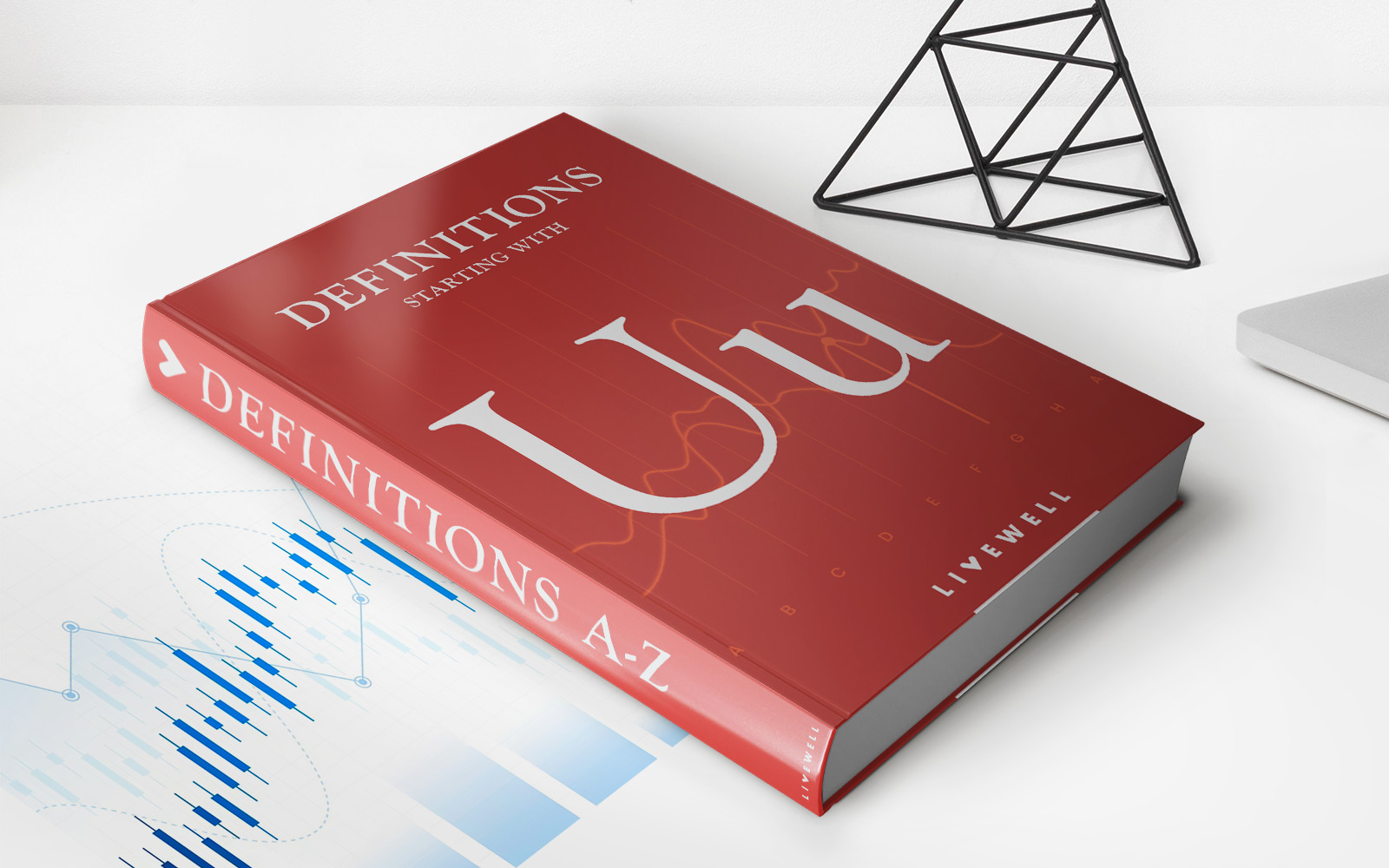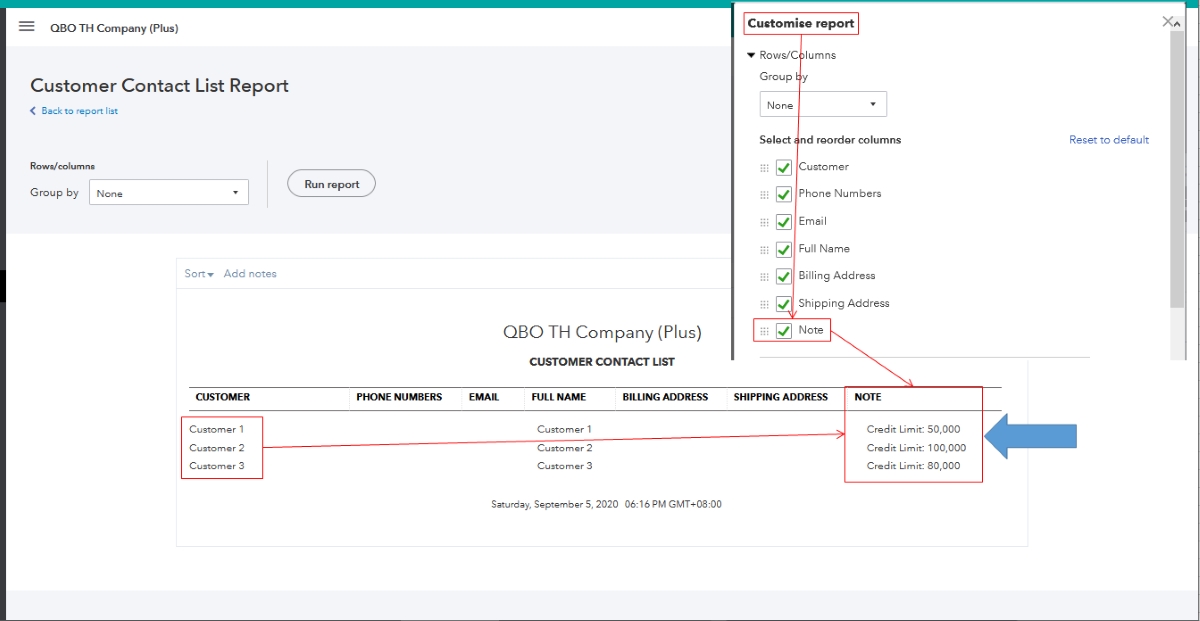

Finance
Who Is The Subscriber On Insurance
Modified: December 30, 2023
Discover the role of subscribers in the insurance industry. Learn about the significance of finance in insurance and how it impacts policyholders.
(Many of the links in this article redirect to a specific reviewed product. Your purchase of these products through affiliate links helps to generate commission for LiveWell, at no extra cost. Learn more)
Table of Contents
- Introduction
- Definition of Insurance Subscriber
- Roles and Responsibilities of Insurance Subscribers
- Types of Insurance Subscribers
- Importance of Identifying the Insurance Subscriber
- Factors to Consider When Determining the Insurance Subscriber
- How to Determine the Insurance Subscriber in Different Insurance Policies
- Common Issues and Challenges in Identifying the Insurance Subscriber
- Legal Considerations Related to the Insurance Subscriber
- Conclusion
Introduction
Insurance is a crucial aspect of financial planning, providing individuals and businesses with protection against unforeseen risks. When it comes to insurance policies, one important factor to consider is the insurance subscriber. The insurance subscriber is a key figure in the insurance industry, as they are the individual or entity responsible for taking out and maintaining the insurance policy.
The insurance subscriber is essentially the person or entity that holds the contractual rights and obligations of the insurance policy. They are the primary contact point for the insurance company and play a significant role in managing the policy, including making premium payments and filing claims.
In this article, we will delve into the role of the insurance subscriber, the various types of subscribers, and the importance of identifying the insurance subscriber in insurance policies. We will also explore the factors to consider when determining the insurance subscriber, common challenges in identifying the subscriber, and the legal considerations related to this role.
Understanding the concept of the insurance subscriber is essential for insurance policyholders, as it directly impacts their rights and responsibilities under the policy. Furthermore, insurance companies rely on accurately identifying the subscriber to effectively manage policies and provide efficient customer service.
So, let’s dive deeper into the world of insurance subscribers and discover their significance in the insurance landscape.
Definition of Insurance Subscriber
The insurance subscriber, also known as the policyholder or insured, is the individual or entity that enters into a contractual agreement with an insurance company to obtain insurance coverage. They are the primary party responsible for purchasing and maintaining the insurance policy.
The insurance subscriber can be an individual, such as a person seeking personal insurance coverage for themselves or their family members. It can also be a business entity, such as a company in need of insurance coverage for their assets, employees, or liability protection.
As the insurance subscriber, the individual or entity plays a crucial role in the insurance relationship. They are legally bound by the terms and conditions outlined in the insurance policy and have certain rights and responsibilities pertaining to the coverage provided.
In simpler terms, the insurance subscriber is like the captain of a ship. They navigate through the insurance process, from selecting the right policy to managing payments and interacting with the insurance company.
It’s important to note that the insurance subscriber may not always be the beneficiary of the insurance policy. While they hold the rights and obligations of the policy, the benefits and coverage provided by the policy may be directed towards another party, such as a spouse, dependent, or business entity.
In essence, the insurance subscriber is the party that initiates and maintains the insurance policy. They have the authority to make changes and decisions regarding the policy, including adding or removing coverage, or updating personal information.
Understanding the concept of the insurance subscriber is crucial for policyholders, as it helps them grasp their role and responsibilities within the insurance relationship. It also allows them to effectively communicate with the insurance company and ensure that their coverage meets their specific needs.
Roles and Responsibilities of Insurance Subscribers
As the primary party responsible for the insurance policy, the insurance subscriber has several important roles and responsibilities. These duties ensure the effective management of the policy and the fulfillment of contractual obligations. Let’s explore the key roles and responsibilities of insurance subscribers:
- Purchasing Insurance: The insurance subscriber is responsible for selecting and purchasing the appropriate insurance coverage. They must assess their specific needs and choose a policy that provides adequate protection against potential risks.
- Paying Premiums: One of the fundamental responsibilities of the insurance subscriber is to pay premiums. Premiums are regular payments made to the insurance company in exchange for maintaining coverage. It is the subscriber’s duty to make timely payments to ensure continuous protection.
- Understanding Policy Terms: Insurance policies are contractual agreements with specific terms and conditions. The insurance subscriber has the responsibility to thoroughly read and understand these terms, including coverage limits, deductibles, exclusions, and claim procedures. It is crucial to be aware of the policy details to make informed decisions.
- Updating Policy Information: As circumstances change, the insurance subscriber must update their policy information. This includes notifying the insurance company of changes in address, contact details, or any other relevant information that may affect the coverage or premiums.
- Filing Claims: In the event of a covered loss or damage, the insurance subscriber has the responsibility to promptly file a claim with the insurance company. This includes providing all necessary documentation and cooperating with the claims process.
- Managing Policy Coverage: The insurance subscriber should regularly assess their coverage to ensure it aligns with their changing needs. They have the responsibility to make adjustments to the policy, such as adding or removing coverage, based on their evolving circumstances.
- Adhering to Policy Conditions: Insurance policies come with certain conditions, such as maintenance obligations or requirements for loss prevention. The insurance subscriber must comply with these conditions to ensure the validity of coverage and avoid any potential coverage disputes.
- Communicating with the Insurance Company: The insurance subscriber serves as the main point of contact between the insurance company and themselves. They should maintain open and effective communication to address any questions or concerns regarding the policy.
By fulfilling these roles and responsibilities, the insurance subscriber effectively manages their insurance policy, maintains a good relationship with the insurance company, and ensures they receive the benefits and protection they expect.
Types of Insurance Subscribers
Insurance subscribers come in various forms, depending on the nature of the coverage and the relationship with the insured party. Let’s explore the different types of insurance subscribers:
- Individual Subscribers: These are individuals who purchase insurance coverage for themselves or their immediate family members. Individual subscribers can include homeowners seeking property insurance, individuals purchasing health insurance, or car owners obtaining auto insurance. The individual subscriber is both the policyholder and the beneficiary of the coverage.
- Group Subscribers: Group subscribers consist of entities that provide insurance coverage to a group of individuals, such as employers offering health insurance to their employees or professional associations providing liability insurance to their members. In this case, the group entity is the policyholder, and the individuals within the group are the insured parties.
- Business Subscribers: Business subscribers include companies or organizations that require insurance coverage for their operations, assets, or employees. This can range from small businesses obtaining general liability insurance to large corporations securing property and casualty coverage. The business entity acts as the policyholder, and the coverage is extended to the business and its assets.
- Named Insured/Subscribing Entity: In certain insurance policies, the named insured or subscribing entity refers to the primary party responsible for the policy. This can be an individual, a group, or a business entity. The named insured has authority over the policy and is typically the first point of contact for the insurance company.
- Additional Insured: An additional insured is an individual or entity added to an insurance policy by the primary insured party. This is commonly seen in liability policies, where a business may add a contractor or a landlord as an additional insured to protect them from potential claims. The additional insured has limited rights under the policy, but they benefit from the coverage provided.
- Co-Insured: Co-insurance refers to a situation where multiple parties share the financial risk and responsibility in an insurance policy. These parties are referred to as co-insureds. For example, in property insurance, co-owners of a building may be listed as co-insureds, sharing the coverage and paying premiums collectively.
Understanding the different types of insurance subscribers is essential as it determines the relationship between the policyholder and the insured parties. Whether it’s an individual, a group, or a business entity, the type of subscriber impacts the rights, responsibilities, and coverage under the insurance policy.
Importance of Identifying the Insurance Subscriber
Identifying the insurance subscriber is of utmost importance in the insurance industry. It not only defines the party responsible for the insurance policy but also has several significant implications. Let’s explore the importance of identifying the insurance subscriber:
- Legal Rights and Obligations: The insurance subscriber holds the legal rights and obligations of the insurance policy. This includes the right to receive coverage, file claims, and make policy changes. By accurately identifying the subscriber, all parties involved are aware of their legal responsibilities and can ensure compliance with the terms and conditions of the policy.
- Communication and Correspondence: The insurance subscriber acts as the main point of contact between the insured parties and the insurance company. Irrespective of the type of subscriber, they are responsible for relaying information, addressing inquiries, and receiving important communications from the insurer. Correctly identifying the subscriber ensures smooth communication and efficient correspondence throughout the policy period.
- Premium Payments: The insurance subscriber is responsible for making premium payments to maintain the insurance coverage. Accurate identification of the subscriber ensures that premium invoices and payment reminders are directed to the correct party. It also aids in avoiding payment disputes or issues regarding policy cancellation due to non-payment.
- Claims Processing: When a claim arises, it is the insurance subscriber who initiates the claims process. Accurate identification of the subscriber ensures that the claim is processed promptly, and the benefits are directed to the appropriate party. It also prevents any delays or complications with claim settlements.
- Policy Modifications: From time to time, policyholders may need to modify their insurance coverage. Whether it’s adding additional coverage, changing beneficiaries, or updating policy information, accurately identifying the subscriber is crucial. It ensures that the requested modifications are correctly processed, reducing the risk of errors or misunderstandings.
- Compliance and Regulatory Requirements: Insurance companies operate under strict regulatory guidelines. Identifying the insurance subscriber is necessary to comply with these requirements. It allows insurers to maintain accurate records, perform necessary audits, and ensure adherence to legal and regulatory standards.
- Effective Customer Service: Accurately identifying the insurance subscriber enables insurance companies to provide efficient and personalized customer service. It allows insurers to understand the specific needs and requirements of the policyholder, address any concerns or inquiries, and tailor their services accordingly.
Overall, identifying the insurance subscriber serves as the foundation for a well-managed and transparent insurance relationship. It facilitates effective communication, ensures compliance with contractual obligations, and enables a smooth claims process. As such, accurately identifying the insurance subscriber is of paramount importance in the insurance industry.
Factors to Consider When Determining the Insurance Subscriber
Determining the insurance subscriber is crucial in insurance policies, as it establishes the party responsible for the policy and its management. Several factors should be considered when identifying the insurance subscriber. Let’s explore these factors:
- Ownership and Legal Title: The ownership and legal title of the insured property or entity play a significant role in determining the insurance subscriber. Generally, the owner of the property or the legal entity is considered the subscriber. For example, in property insurance, the homeowner is typically the subscriber, while in business insurance, the entity’s owner or board of directors may act as the subscriber.
- Contractual Agreement: The terms and conditions outlined in the insurance policy provide guidance on identifying the subscriber. The policy document specifies who entered into the contractual agreement with the insurance company, therefore determining the subscriber. It is essential to review the policy language to accurately identify the subscriber according to the agreement.
- Payment of Premiums: The party responsible for making premium payments can also indicate the insurance subscriber. The entity or individual making regular premium payments is likely to be the subscriber of the policy. However, it is important to consider the possibility of a third party, such as an employer, making premium payments on behalf of the insured party.
- Beneficiary Designation: For certain insurance policies, the beneficiary designation can influence the identification of the subscriber. If the subscriber designates someone else as the primary beneficiary, they may not be the sole subscriber of the policy. In these cases, the subscriber and the beneficiary may be different parties.
- Authorized Signatory: In some instances, a designated authorized signatory may act on behalf of the subscriber in administrative matters related to the policy. This authorized signatory may have the authority to make changes to the policy, file claims, or communicate with the insurance company. It is important to consider the role and authority of authorized signatories when determining the insurance subscriber.
- Legal Documentation: Legal documentation, such as property deeds, business registration documents, or corporate bylaws, can provide insights into identifying the insurance subscriber. These documents may explicitly state the entity or individual responsible for insurance matters, assisting in the determination process.
- Intent and Purpose: Understanding the intent and purpose behind the insurance coverage can also shed light on the insurance subscriber. Examining the reason for obtaining the policy and the intended beneficiaries can help identify the party who initiated and maintained the coverage.
It’s important to note that each insurance policy may have its unique considerations when determining the subscriber. It is advisable to review the specific policy language, consult legal and insurance professionals if necessary, and analyze the listed factors to accurately identify the insurance subscriber.
How to Determine the Insurance Subscriber in Different Insurance Policies
Determining the insurance subscriber can vary depending on the type of insurance policy. Different policies have specific characteristics and considerations that impact the identification process. Let’s explore how to determine the insurance subscriber in various insurance policies:
- Property Insurance: In property insurance, the subscriber is typically the owner of the insured property. The person or entity holding legal ownership and responsibility for the property is considered the subscriber. This can include homeowners for their primary residence, landlords for rental properties, or businesses for commercial properties.
- Health Insurance: With health insurance, the subscriber is often the individual or the policyholder who purchases the coverage. In individual health insurance plans, the individual is both the subscriber and the insured party. In group health insurance plans, such as those provided by employers, the employer is the subscriber, and the employees covered under the plan are insured parties.
- Auto Insurance: In auto insurance, the subscriber is typically the owner of the vehicle. The person or entity named as the vehicle owner in the registration or title documents is considered the subscriber. If the vehicle is leased or financed, the lessee or the lender may be listed as the subscriber.
- Life Insurance: For life insurance policies, the subscriber is usually the insured party themselves or the policyholder who purchases the coverage. In some cases, the subscriber may also be a third party, such as a spouse or a business entity, if they have an insurable interest in the insured’s life.
- Business Insurance: Business insurance policies can have multiple subscribers depending on the nature of the coverage. The business entity itself is typically the subscriber for general liability or property insurance. However, for key person insurance or buy-sell agreements, the business may designate specific individuals as subscribers.
- Professional Liability Insurance: In professional liability insurance, such as malpractice insurance for healthcare professionals or errors and omissions insurance for professionals, the subscriber is often the individual professional or their business entity. The specific terms of the policy and professional regulations may further define the subscriber.
When determining the insurance subscriber in different insurance policies, it is essential to review the policy documents and consider the ownership, legal documentation, purpose of coverage, and the relationship between the insured parties and the policyholder. Consulting with insurance professionals or legal advisors can further assist in accurately identifying the insurance subscriber.
Understanding who the insurance subscriber is in a specific policy ensures that the rights and responsibilities under the policy are properly assigned and managed, enabling a smooth insurance relationship and claims process.
Common Issues and Challenges in Identifying the Insurance Subscriber
Identifying the insurance subscriber can sometimes present certain challenges and complications. These issues can arise due to various factors, including policy complexities, changes in circumstances, or ambiguities in documentation. Let’s explore some common issues and challenges in identifying the insurance subscriber:
- Multiple Ownership or Entities: In cases where there are multiple owners or entities involved in an insurance policy, determining the subscriber can become challenging. This can occur in shared property ownership, partnerships, or joint business ventures. Clarifying the roles and responsibilities of each owner or entity is crucial in identifying the true insurance subscriber.
- Change in Ownership or Legal Structure: If there has been a change in ownership or legal structure, such as a property transfer or a business merger, identifying the correct insurance subscriber can become complicated. It is important to review relevant legal documentation, such as deeds or business formation records, to determine the appropriate party responsible for the insurance policy.
- Beneficiary Designation: In some insurance policies, the beneficiary designation may impact the identification of the subscriber. If the subscriber designates another party as the primary beneficiary, it may raise questions regarding their role and whether they are the true subscriber. Proper analysis of the policy language and the intended coverage can help in clarifying this issue.
- Third-Party Payment: In certain situations, a third party may make premium payments on behalf of the insured party. This can occur when an employer pays for group insurance coverage or when a parent pays for their dependent’s insurance. Determining the insurance subscriber requires understanding who bears the ultimate responsibility and control over the policy.
- Complex Relationships: Relationships between individuals or entities involved in the insurance policy can be intricate, especially in cases such as blended families, business partnerships, or authorized representatives. In these situations, it is necessary to carefully interpret the legal agreements and authority granted to determine the true insurance subscriber.
- Ambiguity in Documentation: Lack of clarity or incomplete documentation can create challenges in identifying the insurance subscriber. In cases where ownership or authority is not explicitly stated, it may be necessary to gather additional information and seek legal advice to establish the subscriber’s identity.
- Disputes and Inconsistencies: Disputes or conflicting claims regarding the insurance subscriber can arise due to misunderstandings, competing interests, or disagreements. These situations require careful examination of all relevant information, including contractual agreements, ownership documents, and communication records, to resolve the issue and determine the rightful subscriber.
Addressing these common issues and challenges in identifying the insurance subscriber requires thorough investigation, clear communication, and a careful review of policy documentation. Consulting with insurance professionals or legal advisors can provide guidance and help resolve any complexities or uncertainties surrounding the identification process.
By overcoming these challenges, insurance companies and policyholders can ensure that the correct party is identified as the insurance subscriber, leading to a smoother policy administration and claims handling process.
Legal Considerations Related to the Insurance Subscriber
Identifying the insurance subscriber in an insurance policy has significant legal implications. It affects the rights, obligations, and responsibilities of the parties involved. Several legal considerations are essential to keep in mind when it comes to the insurance subscriber. Let’s explore these considerations:
- Contractual Obligations: The insurance subscriber is bound by the terms and conditions outlined in the insurance policy. They have contractual obligations to fulfill, such as making premium payments, adhering to policy conditions, and engaging in good faith when filing claims. Failure to meet these obligations can lead to policy cancellations or denials of coverage.
- Legal Capacity: The insurance subscriber must have the legal capacity to enter into an insurance contract. This means that they must be of legal age, mentally competent, and not under any legal disabilities that would affect their ability to understand and fulfill the contractual obligations.
- Beneficiary Designation: In some insurance policies, the beneficiary designation is a legally binding directive. It specifies who will receive the proceeds of the policy upon the death or event triggering the claim. The insurance subscriber has the right to name and update beneficiaries as permitted by the policy and applicable laws.
- Ownership and Insurable Interest: The insurance subscriber must have an insurable interest in the insured property or the life of the insured. Insurable interest refers to a significant financial or legal interest in the insured item, where the subscriber would suffer a financial loss if the item experiences damage or loss. Without insurable interest, the insurance contract may be deemed void or unenforceable.
- Utmost Good Faith: The insurance subscriber, like all parties to an insurance contract, must act in utmost good faith. This means they must provide accurate and complete information when applying for coverage, updating policy details, or filing claims. Material misrepresentations or omissions can lead to policy rescissions, non-payment of claims, or even legal consequences.
- Policy Modification: The insurance subscriber typically has the authority to make certain modifications to the insurance policy, such as adding or removing coverage, changing beneficiaries, or adjusting policy limits. However, it is important to consider any limitations or requirements outlined in the policy language or applicable laws before making modifications.
- Regulatory Compliance: Insurance companies operate within specific legal and regulatory frameworks. The insurance subscriber must comply with these regulations, including providing accurate information, paying premiums, and engaging in fair and ethical practices. Non-compliance can result in penalties, loss of coverage, or legal ramifications.
- Dispute Resolution: In the event of disputes related to the insurance policy, the legal provisions and dispute resolution mechanisms specified in the policy will govern. These can include arbitration, mediation, or legal proceedings. Understanding the dispute resolution process outlined in the policy can help in resolving any conflicts that may arise.
It is crucial for both insurance companies and insurance subscribers to be aware of these legal considerations. Adhering to the legal requirements and fulfilling contractual obligations ensures a solid foundation for the insurance relationship and helps maintain transparency, trust, and compliance throughout the policy period.
Seeking professional legal advice or consulting with insurance professionals can help navigate the legal complexities and ensure that all legal considerations related to the insurance subscriber are appropriately addressed.
Conclusion
Identifying the insurance subscriber is a fundamental aspect of insurance policies. The insurance subscriber serves as the primary party responsible for the policy, holding the rights and obligations outlined in the contract. Throughout this article, we have explored the definition of the insurance subscriber, their roles and responsibilities, the types of subscribers, and the importance of accurately identifying them.
Understanding who the insurance subscriber is in a specific policy is crucial for both policyholders and insurance companies. It ensures clear communication, efficient policy administration, and seamless claims processing. By correctly identifying the insurance subscriber, policyholders can navigate the insurance process with confidence and ensure their coverage meets their specific needs. Insurance companies, on the other hand, rely on identifying the subscriber to effectively manage policies, provide accurate customer service, and fulfill contractual obligations.
However, identifying the insurance subscriber can present challenges due to factors such as multiple ownership, changes in circumstances, or ambiguities in documentation. It requires careful consideration of legal and contractual aspects, proper interpretation of policy terms, and potentially consulting with professionals to resolve any complexities.
Legal considerations related to the insurance subscriber further emphasize the importance of correctly identifying this party. Compliance with contractual obligations, maintaining insurable interest, acting in utmost good faith, and adhering to regulatory requirements are significant components of the insurance relationship that hinge on accurately identifying the subscriber.
In conclusion, recognizing the insurance subscriber is a crucial step in insurance policy management. It sets the foundation for a transparent and mutually beneficial relationship between the policyholder and the insurance company. By understanding and addressing the various aspects related to the insurance subscriber, both parties can navigate the insurance landscape with confidence and ensure the smooth operation of their insurance coverage.














